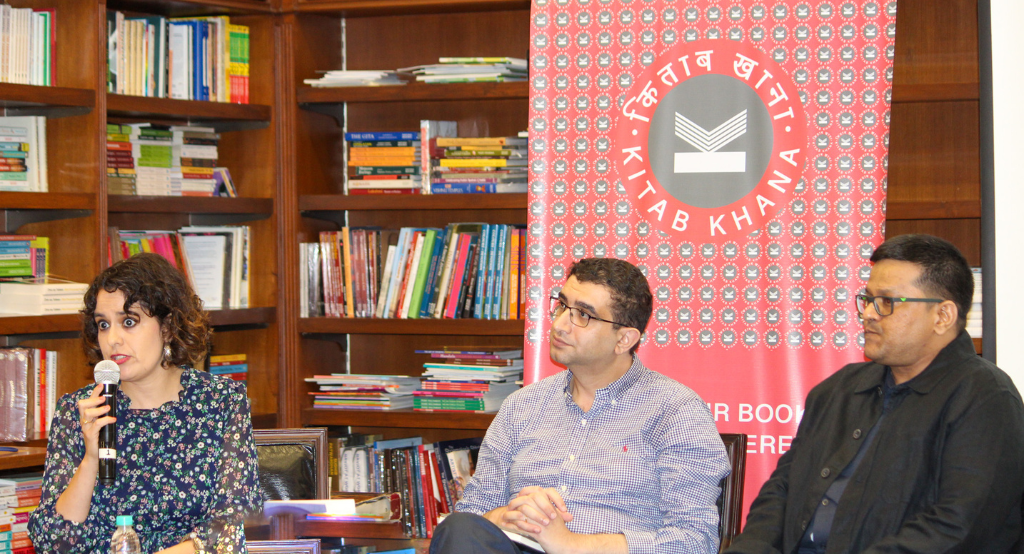Broadcasting Beyond Borders

From news about World War II to the broadcasting of music from popular movies, radio has played a crucial role in South Asia for more than half a century. To get a deeper understanding on the subject, Columbia Global Centers | Mumbai, in collaboration with Kitab Khana, conducted an enriching discussion on the book, Radio for the Millions as part of the Center’s ‘Writing Indian Stories’ series, on July 14, 2023. The book’s author, Dr. Isabel Alonso, Assistant Professor at Department of Middle Eastern, South Asian & African Studies at Columbia University, engaged in a conversation with Indian academics, Dr. Dinyar Patel, Assistant Professor of History, SP Jain Institute of Management and Research, and Dr. Faiz Ullah, Assistant Professor, School of Media and Cultural Studies at Tata Institute of Social Sciences.
Dr. Alonso introduced her book, which examines the history of Hindi-Urdu radio during the height of its popularity from the 1930s to the 1980s, as an illustration of the era when radio served not only as a tool for nation building in South Asia, but also a means of establishing strong ties across borders, which defied political agendas. According to Dr. Alonso, the book touches upon three significant epochs in South Asia's history, through which radio emerged as a pivotal tool in shaping the Indian subcontinent's narrative. The initial phase coincides with World War II, highlighting the transmission of news from Germany and Japan to the then India. It is followed by the post-independence period, in which Hindi and Urdu film music notably influenced the landscape even in the face of political opposition. The last part highlights the India-Pakistan war of 1965, where radio broadcasts served to disseminate propaganda between the two nations. Based on 15 years of research, it simultaneously documents the story of Indian subcontinent’s beloved former radio announcer, Ameen Sayani and his crucial role in developing a sense of belongingness in people’s minds through his popular radio show Binaca Geetmala.
When asked about the challenges she faced while working on this book, Dr. Alonso recollected her struggle to procure documented archives and recordings of popular radio shows which seemed to exist only in people’s memories. She stated, “Radio was everywhere, but at the same time radio was nowhere, due to the lack of archives. In a sense, the main difficulty was knowing that information is everywhere, but having no idea where to begin”. Her last resort to gain information was approaching people who had once cherished the radio broadcasts. She interviewed broadcasters and listeners to learn about important events in the history of radio in South Asia and directed her search for archival information through their stories. Dr. Patel also stressed the intricacies of data gathering, especially in South Asian countries, where documented history lay in scattered hands, including private intellectuals, and public sources which came with challenging bureaucratic processes to access them.
Concluding the session on a positive note, Dr. Alonso conveyed that she felt fortunate to complete this book at a period when the ‘medium of sound’ was constantly evolving from radio and FM to podcasts. She believes it is an interesting time for sound media as it is once again gaining centrality and expressed the hope that her book will spark people’s interest in media history.